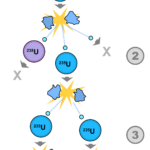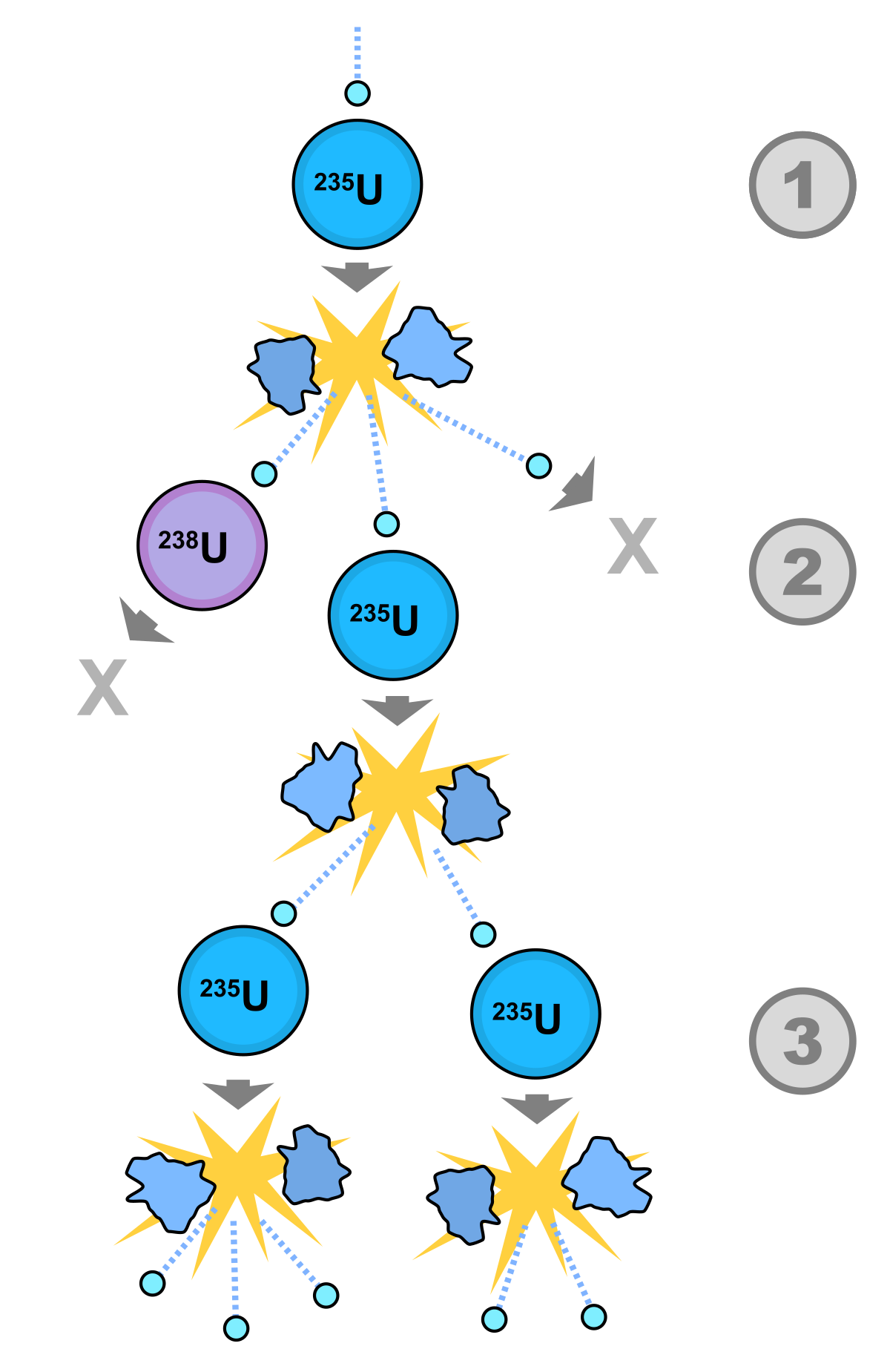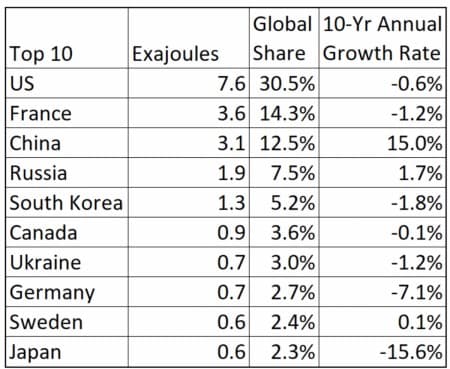How much nuclear energy can help to meet the “Green” demand


Between 2009 and 2019, global renewable energy consumption grew at an annual average of 13.4%. Over this period, renewable energy consumption grew from 8.2 exajoules (EJ) globally to 28.8 EJ.
However, global carbon dioxide emissions increased by more than 4 billion tons per year during that period, reaching an all-time high in 2019.
The reason for this is that global global energy consumption, while growing at an average annual rate of only 1.9%, increased by 92 EJ from 2009 to 2019. Renewable energies are growing at a much faster rate. but it will take decades with current growth before renewables can seriously affect global carbon dioxide emissions.
That's why nuclear power could play a vital supporting role in curbing global carbon dioxide emissions. Still, nuclear power is concentrated in a handful of countries and very few are increasing their nuclear power generation.

France recently announced that it will build up to 14 new nuclear reactors by 2050. This marked a turnaround, as President Emmanuel Macron promised four years ago to abandon nuclear power and shut down 12 nuclear reactors. But the country had a reality check this winter when some of its nuclear power plants went offline, and was forced to switch to coal as a result.
France will build six new nuclear reactors and study the possibility of another eight. “Given the need for electricity, the need to also anticipate the transition and the end of the existing fleet, which cannot be extended indefinitely, we will launch a program of new nuclear reactors today,” said Macron.
But the vast majority of new nuclear power construction in the next five years will take place in the Asia Pacific region. This is important, because this is the area with the fastest growing carbon footprint.
Related: Oil prices soar as OPEC + remains with 400,000 barrels per day increase in production
China, already a major nuclear power, has 20 new nuclear reactors under construction within the next five years. India, which is one of the largest and fastest growing energy consumers in the world, is not yet a major producer of nuclear power. However, with eight new nuclear reactors set to begin construction by 2027, it is firmly committed to becoming one by easing its reliance on coal.
More nuclear power in China and India could help meet growing energy demand without a continued explosion in the region's carbon dioxide emissions. Indeed, it may be the only solution that can reasonably achieve this.
In the United States, the world's largest nuclear power producer, nuclear power generation has remained flat for the past two decades, but that is expected to change this year with Southern's Vogtle 3 and 4 units commissioning. These will be the first new nuclear units built in the United States in more than three decades, while Gates is developing the innovative liquid sodium-cooled fast reactor with TerraPower.
The problems for the development of nuclear energy are known:
- the history of accidents, from Chernobyl to Fukushima, which created a series of rightly binding legislations;
- the construction of a traditional nuclear power plant takes a long time, even if not like those of the French.
The "Green" sources are unstable, therefore unsuitable for an advanced industrial system which, unfortunately, also needs heavy industries, such as the steel industry. Only hydroelectric, among the renewables, offers sufficient stability. So either we make many beautiful dams, or we go on oil, or we make nuclear power, or we give up industry.

Thanks to our Telegram channel you can stay updated on the publication of new articles of Economic Scenarios.
The article How much nuclear energy can help to meet the "Green" demand comes from ScenariEconomici.it .
This is a machine translation of a post published on Scenari Economici at the URL https://scenarieconomici.it/quanto-lenergia-nucleare-puo-aiutare-a-far-fronte-alla-domanda-green/ on Fri, 18 Feb 2022 10:10:10 +0000.
